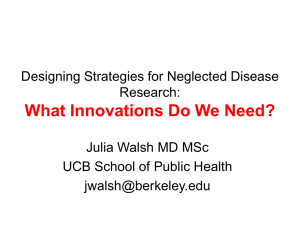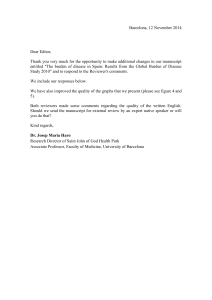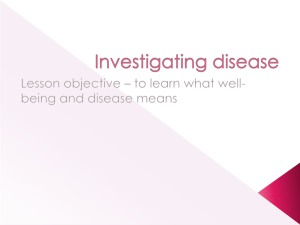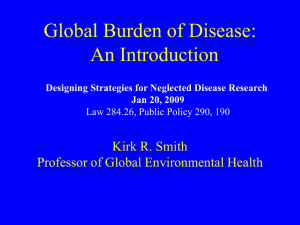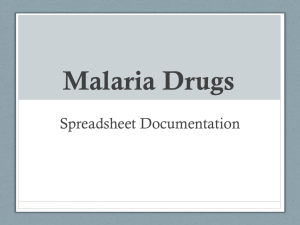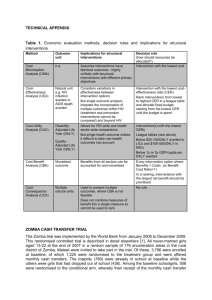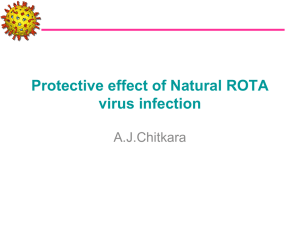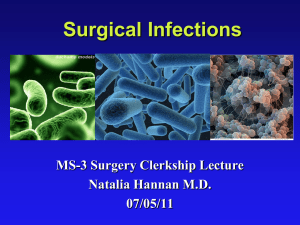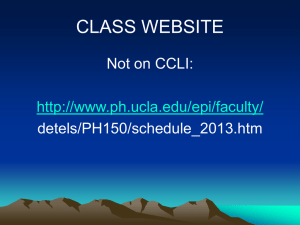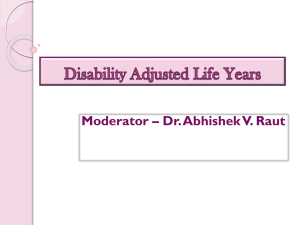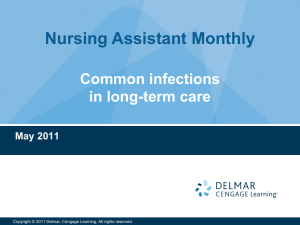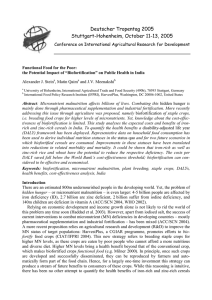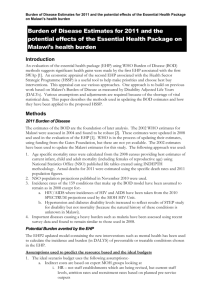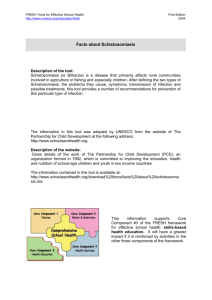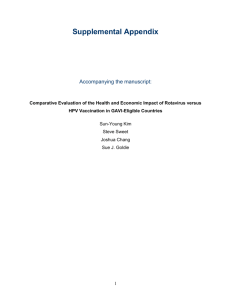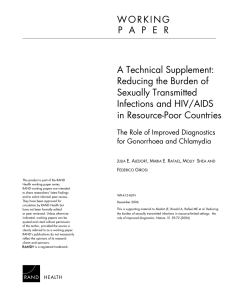Worm Treatment for School Children: How DALYs Averted are
advertisement
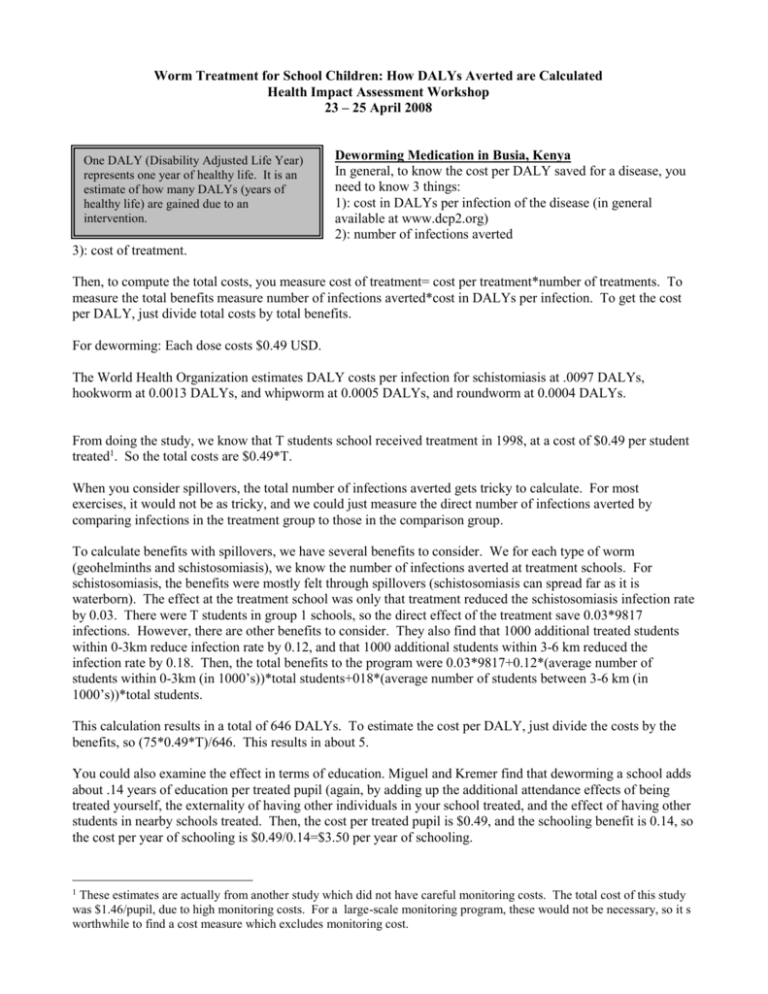
Worm Treatment for School Children: How DALYs Averted are Calculated Health Impact Assessment Workshop 23 – 25 April 2008 One DALY (Disability Adjusted Life Year) represents one year of healthy life. It is an estimate of how many DALYs (years of healthy life) are gained due to an intervention. Deworming Medication in Busia, Kenya In general, to know the cost per DALY saved for a disease, you need to know 3 things: 1): cost in DALYs per infection of the disease (in general available at www.dcp2.org) 2): number of infections averted 3): cost of treatment. Then, to compute the total costs, you measure cost of treatment= cost per treatment*number of treatments. To measure the total benefits measure number of infections averted*cost in DALYs per infection. To get the cost per DALY, just divide total costs by total benefits. For deworming: Each dose costs $0.49 USD. The World Health Organization estimates DALY costs per infection for schistomiasis at .0097 DALYs, hookworm at 0.0013 DALYs, and whipworm at 0.0005 DALYs, and roundworm at 0.0004 DALYs. From doing the study, we know that T students school received treatment in 1998, at a cost of $0.49 per student treated1. So the total costs are $0.49*T. When you consider spillovers, the total number of infections averted gets tricky to calculate. For most exercises, it would not be as tricky, and we could just measure the direct number of infections averted by comparing infections in the treatment group to those in the comparison group. To calculate benefits with spillovers, we have several benefits to consider. We for each type of worm (geohelminths and schistosomiasis), we know the number of infections averted at treatment schools. For schistosomiasis, the benefits were mostly felt through spillovers (schistosomiasis can spread far as it is waterborn). The effect at the treatment school was only that treatment reduced the schistosomiasis infection rate by 0.03. There were T students in group 1 schools, so the direct effect of the treatment save 0.03*9817 infections. However, there are other benefits to consider. They also find that 1000 additional treated students within 0-3km reduce infection rate by 0.12, and that 1000 additional students within 3-6 km reduced the infection rate by 0.18. Then, the total benefits to the program were 0.03*9817+0.12*(average number of students within 0-3km (in 1000’s))*total students+018*(average number of students between 3-6 km (in 1000’s))*total students. This calculation results in a total of 646 DALYs. To estimate the cost per DALY, just divide the costs by the benefits, so (75*0.49*T)/646. This results in about 5. You could also examine the effect in terms of education. Miguel and Kremer find that deworming a school adds about .14 years of education per treated pupil (again, by adding up the additional attendance effects of being treated yourself, the externality of having other individuals in your school treated, and the effect of having other students in nearby schools treated. Then, the cost per treated pupil is $0.49, and the schooling benefit is 0.14, so the cost per year of schooling is $0.49/0.14=$3.50 per year of schooling. 1 These estimates are actually from another study which did not have careful monitoring costs. The total cost of this study was $1.46/pupil, due to high monitoring costs. For a large-scale monitoring program, these would not be necessary, so it s worthwhile to find a cost measure which excludes monitoring cost.
